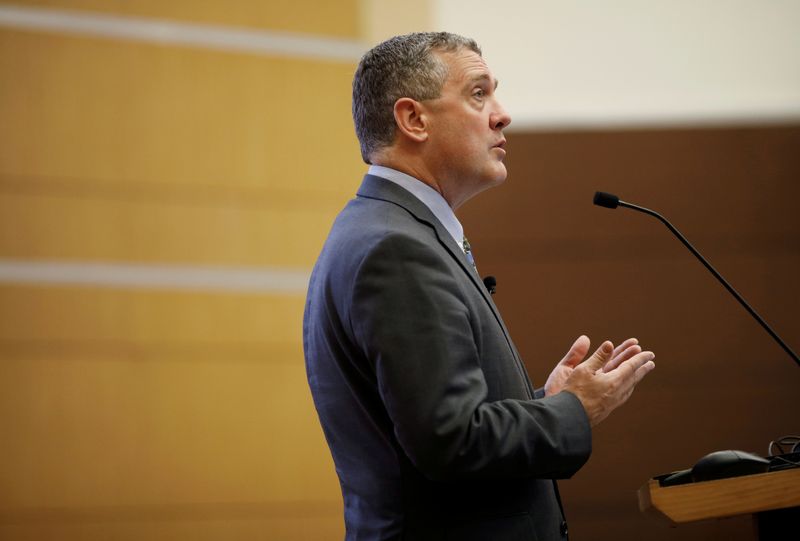WASHINGTON (Reuters) -The U.S. Federal Reserve should "tack in a more hawkish direction" over its next couple of meetings to prepare in case inflation does not begin to ease, St. Louis Federal Reserve bank president James Bullard said on Tuesday.
"If inflation happens to go away we are in great shape for that. If inflation doesn't go away as quickly as many are currently anticipating it is going to be up to the (Federal Open Market Committee) to keep inflation under control," Bullard said on Bloomberg Television.
Bullard, who will be a voter on the Fed's policy next year, repeated his projection that the Fed will need to raise rates twice next year.
Key price measures are rising at the fastest pace in decades, and while many Fed officials expect that to slow on its own the issue remains unresolved.
New data for October on import and export prices showed both exceeding forecasts and rising by the most since May. Both continue to show inflation pressures for goods ranging from meat to motor vehicles running well above pre-pandemic trends.
"The inflation rate is quite high," Bullard said. "It behooves the committee to tack in a more hawkish direction in the next couple of meetings so that we are managing the risk of inflation appropriately."
Bullard said that could include trimming the Fed's monthly bond purchases at a pace of $30 billion per month instead of the current $15 billion "taper," ending purchases as of March instead of June and opening the door to a possible rate increase that much sooner.
Fed officials have said they don't want to raise the target interest rate from the current near zero level until the taper is complete - but that could be open for debate as well if the Fed wanted to convey a more aggressive stance against inflation, Bullard said.

The central bank could also let its balance sheet start to shrink, by not reinvesting maturing bonds, as soon as the taper is finished, he said.
The Fed next meets Dec. 14-15.